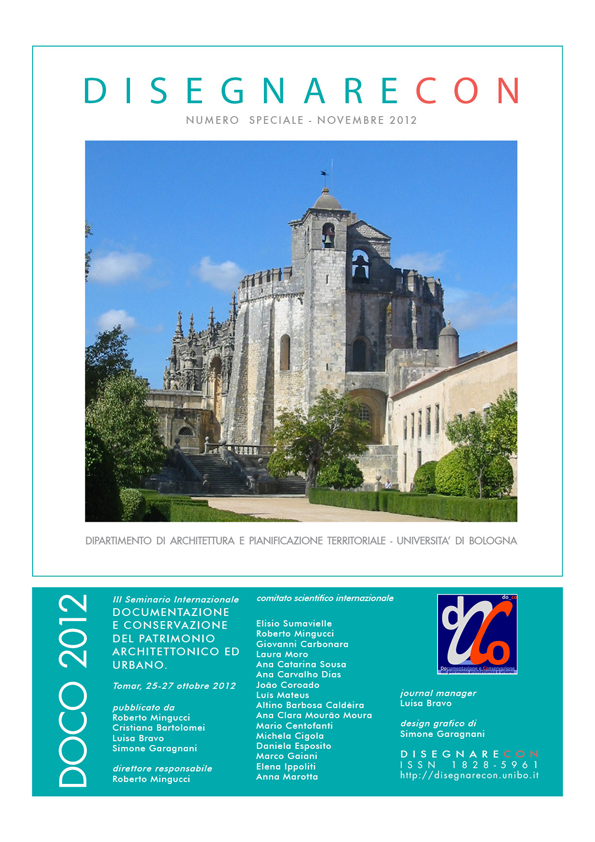Creare Sistemi informativi per studiare, conservare, gestire e comunicare sistemi architettonici e archeologici complessi
DOI:
https://doi.org/10.6092/issn.1828-5961/3277Parole chiave:
Modellazione 3D, 3D WebGIS, Patrimonio culturale, Sistema informativoAbstract
Questo scritto illustra un framework sviluppato per rilevare, costruire, elaborare, gestire e visualizzare modelli tridimensionali di grandi siti archeologici e monumenti architettonici per sistemi 3DGIS Web-based. Il framework è il risultato di 15 anni di sperimentazioni e ricerche realizzati in differenti contesti e situazioni. Le applicazioni sviluppate sono state progettate per differenti tipi di utenti, con un sistema largamente scalabile, capace di supportare differenti dispositivi di output e di lavorare a differenti livelli d’iconicità. L’ultima parte dell’articolo presenta un importante caso di studio applicazione del framework sviluppato: un prototipo di sistema informativo per l’area archeologica di Pompei.
Riferimenti bibliografici
Gaiani M., Micoli L.L. (2005). A framework to build and visualize 3D models from real world data for historical architecture and archaeology as a base for a 3D information system, in Forte M. (a cura di), The reconstruction of Archaeological Landscapes through Digital Technologies, Berkeley, pp. 103-125.
Gaiani M., Alessandri C. (1999). The atrium of St. Mary Abbey in Pomposa: a hypermedial 3-D network database, in Eurographics’99 – Short papers and demo proceedings, Milano, pp. 96-99.
Gaiani M., Gamberini E., Tonelli G. (2001). VR as work tool for architectural & archaeological restoration: the “Ancient Appian Way 3D Web virtual GIS”. In 7th VSMM proceedings, Los Alamitos, IEEE, pp. 86-95.
Brevi F., Ceccarelli N., Gaiani M. (2004). Un cantiere di restauro virtualizzato. Disegnare. Idee, immagini, n. 29, pp. 64-79.
Gaiani M. (2008). Modelli di Palladio - modelli palladiani, In AAVV (a cura di), Palladio 1508-2008 – Il simposio del cinquecentenario, Venezia, Marsilio, pp. 396-400.
Gaiani M., Benedetti B., Remondino F. (a cura di) (2010). Modelli digitali 3D in archeologia: il caso di Pompei, Pisa, Edizioni della Normale.
Benedetti B., Gaiani M., Guzzo P.G. (2008). Scientific knowledge and informationrepresentations in historical-technical archives of archaeological sites: Pompeii as a case study. In Elwazani S., Malhis S., Al-Qawasmi J. (a cura di), Responsabilities and opportunities in architectural conservation conference proceedings, Amman, CSAAR Press, vol. 1, pp. 275-290.
Gaiani M., Gamberini E., Tonelli G. (2002). A framework to use virtual worlds generated from real world 3D models as Work Tool for Architectural & Archaeological Restoration on the Web. International Journal of Design Computing, n. 4.
De Luca L., Véron P., Florenzano M. (2007). A generic formalism for the semantic modeling and representation of architectural elements. Visual Computer, n. 23, pp. 181 - 205.
Jones M.T. (2007). Google’s Geospatial Organizing Principle. Computer Graphics and Applications, vol. 27, n. 4, , pp. 8-13.
Gaiani M. (2000). Strategie di rappresentazione digitale: modelli per la conservazione e il restauro. Quaderni del Centro di Ricerche Informatiche per i Beni Culturali, n. X, pp. 47-69.
Gaiani M. (2003), Metodi per l'utilizzo di mondi virtuali per il supporto su Web al restauro architettonico e archeologico. In Comunicazione multimediale per i Beni Culturali, Milano, Addison-Wesley, pp. 283-324.
Rahman A.A., Pilouk M. (2008). Spatial Data Modeling for 3D GIS, Berlin, Springer-Verlag.
Downloads
Pubblicato
Come citare
Fascicolo
Sezione
Licenza
Copyright (c) 2012 Marco Gaiani
Questa rivista è distribuita con licenza Creative Commons Attribuzione - Non commerciale 3.0 Unported.





